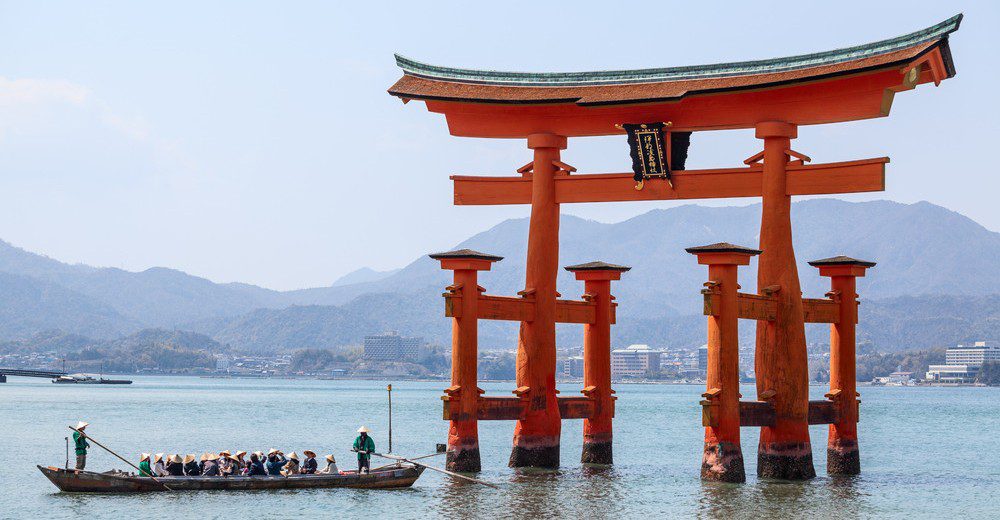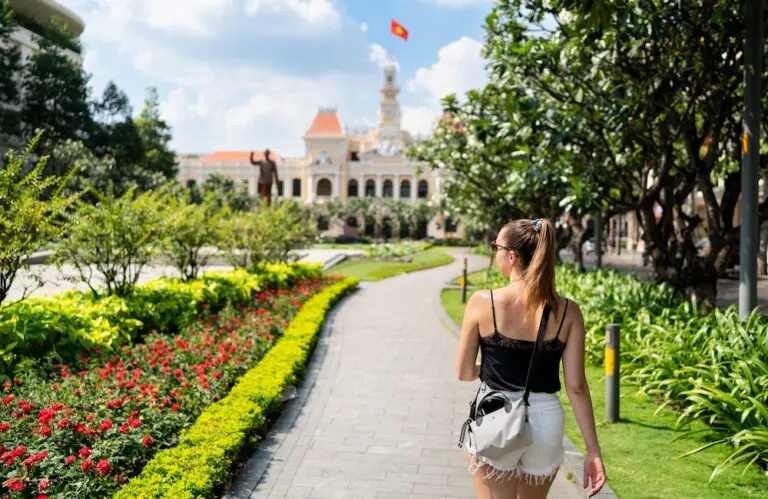Get off the beaten track in the Land of the Rising Sun and discover the jewels of the Seto Inland Sea – Japan’s most scenic waterway that’s dotted with over 3,000 islands.
The Seto Inland Sea (Seto-Naikai or Setouchi) is a large body of water that separates three of the four main islands of Japan: Honshu, Shikoku, and Kyushu (the fourth island is Hokkaido in the north).
But it’s more than just a sea – it’s actually a tourist mecca, packed with the kinds of iconic Japanese experiences that you’re seeking on your trip to the Land of the Rising Sun.
Don’t believe us? Then check out these five compelling reasons why the Seto Inland Sea should be on your next itinerary to Japan.
Oh, and if you haven’t been to Japan yet, read on to the end to find out how you can win a spot on an epic famil to this vast land of ancient traditions and mesmerising natural beauty.
1. You’ll be inspired by some of the best art in Japan

The Seto Inland Sea is a mecca for art lovers. From notable Japanese artists, to European masters such as Monet, Matisse and El Greco, there’s enough art here to keep you mesmerised for days.
Naoshima, in particular, is an island dedicated to art (some even call it “art island”) and can be reached in 20 mins by ferry from Uno, Okayama. Part of Kagawa prefecture in Shikoku, most of the artworks on the island were installed with the intention of bringing contemporary art and architecture in resonance with the pristine nature of the Seto Inland Sea.
Key attractions here include Chichu Art Museum, which is concerned with exploring the relationship between nature and people; Benesse House Museum, which is a museum/hotel; and the Art House Project, where several artists have transformed empty houses into works of art.
(Naoshima is one of the main venues of the Setouchi Triennale, an International Art Festival held once every 3 years. The 2016 spring event has already concluded; the summer event will be held from 18th July to 4th September and the autumn event from 8th October to 6th November.)
The Ohara Museum of Art, over in the quaint canal town of Kurashiki, Okayama Prefecture, is also worth checking out whilst exploring the Inland Sea. Located just 15 mins away on the JR local line from Okayama Station, this institution is dedicated to Western art (European and American greats) and also features a selection of Japanese paintings and pottery.
2. Cycling the Shimanami Kaido = unrivalled sea views

Get some exercise and be treated with absolutely stunning views of the Seto Inland Sea on this 70 km cycling route that stretches all the way from Onomichi, Hiroshima prefecture to Imabari, Ehime prefecture.
Serious cyclists can complete the course in one day, but those seeking a more leisurely experience can cycle at their own pace, staying overnight in one of the many hotels along the route, such as Hotel Cycle – the first hotel designed for cyclists.
To get to the start of the route, travel 90 mins by shinkansen from Shin-Osaka to Fukuyama, and then another 20 mins by JR local train to Onomichi.
3. The best examples of Japanese horticulture are here

Amble through the beautiful grounds of Korakuen in Okayama and marvel at this landscape garden masterpiece dating back to the early 18th century.
Ranked as one of Japan’s three best landscape gardens, this garden incorporates the Okayama Castle into its backdrop, creating one of the most picturesque spots in the country.
Okayama is only 45 mins by shinkansen from Shin-Osaka station, and only 40 mins by shinkansen from Hiroshima station, making it easily reachable from either city.
Another notable example of fine Japanese horticulture is the Ritsurin Garden located in Takamatsu, Kagawa Prefecture.
Especially gorgeous during colourful autumn, the garden is easily reachable by train in just under an hour on the JR Marine Liner from Okayama to Takamatsu station.
4. You can visit a place that changed the world

In 1945 Hiroshima was the first place in the world to experience the devastating effects of nuclear warfare. These days it’s a modern Japanese city like any other, yet it retains its strong link to the past, best represented in the sobering Atomic Bomb Dome and Peace Memorial Museum.
A visit to the World Heritage-listed memorial is one of Japan’s top tourist attractions, and definitely worth a visit on your trip to the Inland Sea. Don’t leave without taking a stroll through the surrounding park.
Hiroshima is 1.5 hours by shinkansen from Shin-Osaka.
5. Kayaking around this iconic shrine is a must

Located on the sacred island Miyajima, only a short(ish) ferry ride from Hiroshima, stands one of Japan’s most magnificent Shinto shrines: Itsukushima Jinja.
The shrine and its torii gate (which is one of the most photographed in all of Japan) are unique for being built over water, seemingly floating in the sea.
This makes them perfect for a kayak trip during high tide!
However, if you’d prefer to stay on hand, you can also walk underneath the gate during low tide. But try and time your visit at high tide as Itsukushima Jinja looks best when the water level is high.
To get here, take a JR local train from Hiroshima to Miyajimaguchi Station (30 mins) and then catch a JR ferry to Miyajima island (10 mins).
READ: CITY GUIDE: Explore 1,000 years of history in traditional Kyoto
READ: FIRST TIME IN JAPAN: Here are the places you absolutely must visit





